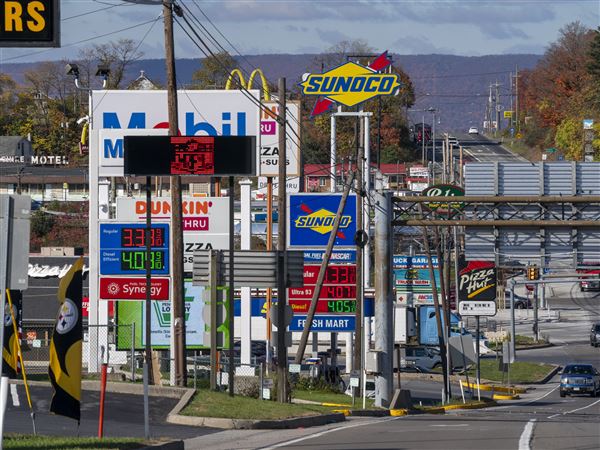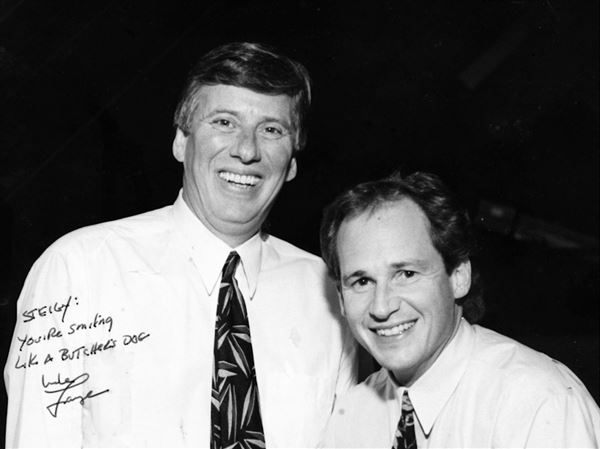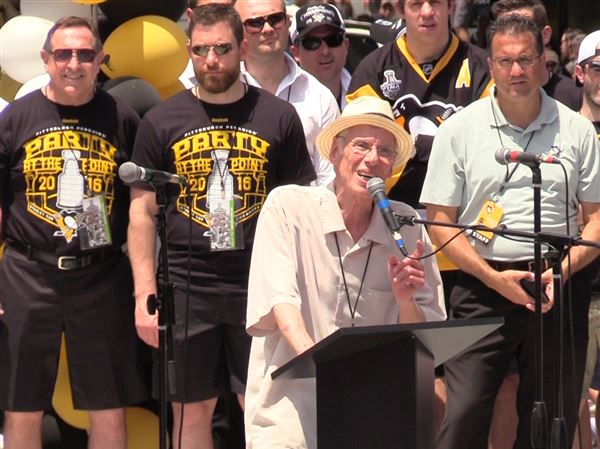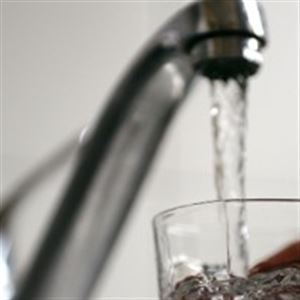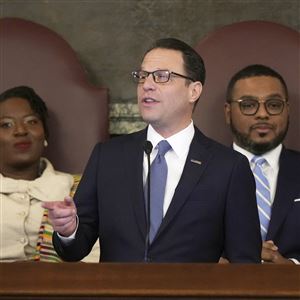A technique that relies more on pulling — and less on digging up lawns — promises to save time and money as the Pittsburgh Water and Sewer Authority removes thousands of lead service lines.
“We don’t want to disrupt people’s yards. We don’t want to disrupt trees that have been there for probably 50, 60 [or] more years,” said Robert Weimar, PWSA’s interim executive director, at a demonstration Friday in Squirrel Hill.
Contractors are due to replace a couple thousand lead lines this year in the PWSA system, following a state order to reduce contamination hazards from the metal. The work targets connection pipes that relay water from a main beneath the street and into a building’s household taps.
A full-length trench excavation and replacement for each service line can take a crew more than a day, cost PWSA several thousand dollars and bust up sidewalks and landscaping in the process. But with the pulling method on display Friday, contractors said they can limit digging to a single hole in the ground and complete a few replacements a day. The approach may cut costs as much as 50 percent, Mr. Weimar said.
Lately it’s worked for about 80 percent of replacements, although that may change as crews move into other neighborhoods and work accelerates, he said. So far this year, PWSA contractors have replaced just more than 100 lead lines, many of them shorter than 50 feet.
“You never know what’s underground, what you might hit,” said David Kovachick, a superintendent with contractor Independent Enterprises.
In a nutshell, the pulling option relies on a construction vehicle to drag out the flexible lead line with brute force. A non-lead line takes its place in the void, following a method used in cities such as Flint, Mich., Mr. Weimar said.
PWSA estimates about 18,000 of some 71,000 residential service connections contain lead; it plans to continue replacements for years. In addition to complete excavation and the pulling method, a third option involves burrowing a brand-new tunnel for a replacement line — without digging a trench.
In a tweet Friday, Mayor Bill Peduto said lead lines in the city will be gone by 2030.
“Our strategy for all lead service line replacements is the least cost -—and the least disruption to homeowners,” Mr. Weimar said.
Adam Smeltz: 412-263-2625, asmeltz@post-gazette.com, @asmeltz.
First Published: May 4, 2018, 10:10 p.m.
